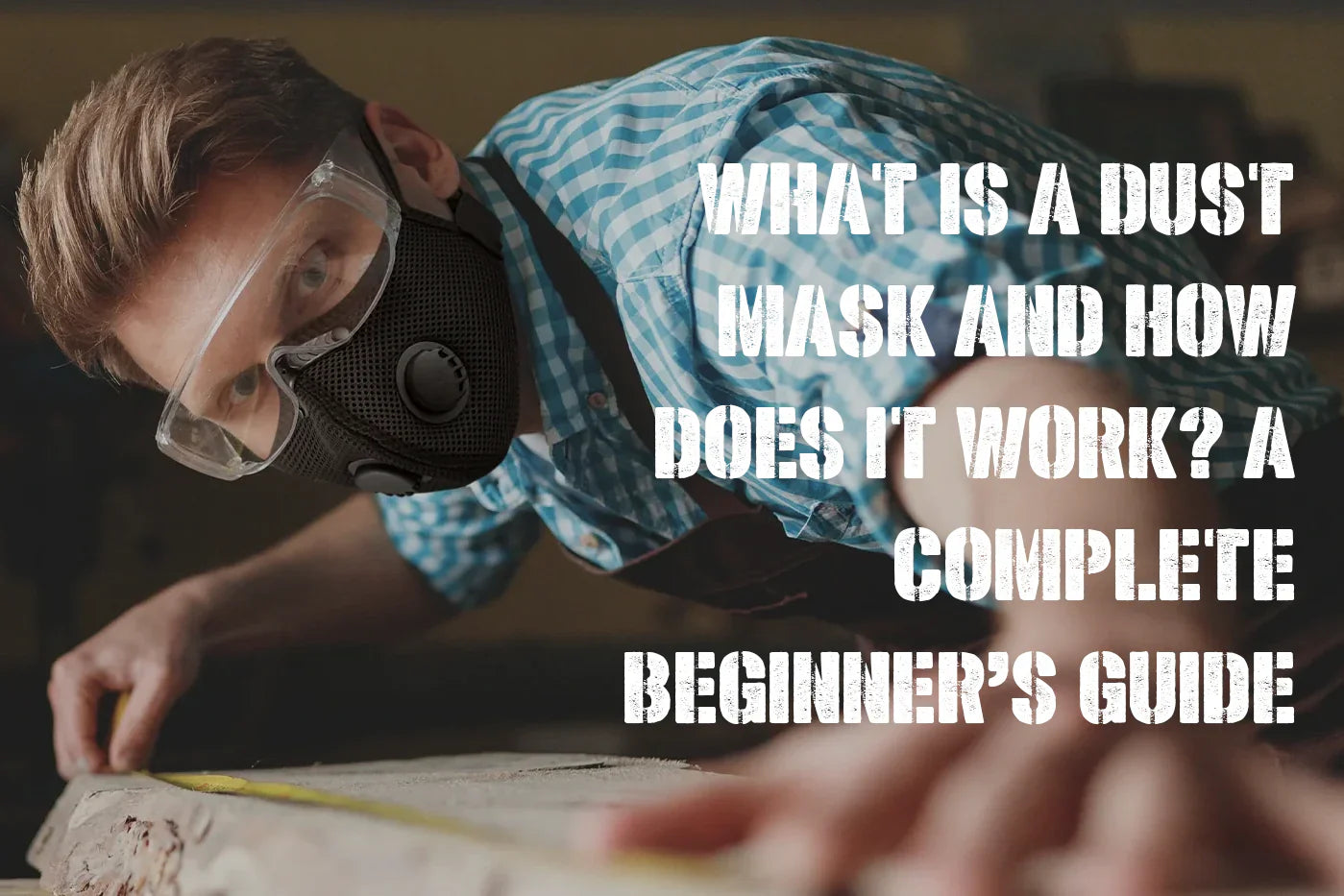What Is a Dust Mask and How Does It Work?
In today’s world, air quality is a growing concern—whether you're working in your garage, mowing the lawn, or navigating construction sites. Dust masks have become essential gear for anyone exposed to airborne particles, but what exactly is a dust mask, and how does it work?
Let’s break it down.
What Is a Dust Mask?
A dust mask is a flexible, lightweight facial covering designed to protect the wearer from inhaling dust, dirt, pollen, sawdust, and other fine airborne particles. Unlike medical masks or full respirators, dust masks are specifically built for low-to-moderate exposure in non-toxic environments—like home renovation, woodworking, gardening, or cycling in urban areas.
They typically cover the nose and mouth and are secured with straps behind the ears or around the head.
How Does a Dust Mask Work?
Dust masks operate on a simple yet powerful principle: mechanical filtration. The mask’s layers—often made of non-woven synthetic fibers—trap airborne particles as you breathe in. High-quality dust masks use multi-layer filters, some of which include activated carbon to help absorb odors and certain organic vapors.
Here’s how it works step-by-step:
-
Particle Interception – Large particles like sawdust are physically blocked by the mask's outer layer.
-
Electrostatic Attraction – Middle layers use electrostatic charge to attract and trap smaller particles.
-
Activated Carbon (Optional) – For masks with carbon layers, harmful fumes or odors are neutralized.
-
Exhalation Valve (Optional) – Some premium masks, like the BASE CAMP® N Series, have a one-way valve to make exhaling easier and prevent heat buildup.
What Types of Dust Can It Filter?
A good dust mask can filter:
-
Fine construction dust
-
Wood particles
-
Pollen
-
Household dust
-
Animal dander
-
Textile fibers
-
Light smoke or smog
However, it's important to note: dust masks are not the same as NIOSH-rated respirators, which are required for toxic gases or asbestos. Always choose the right protection for your environment.
Common Uses for Dust Masks
Dust masks are surprisingly versatile. People across different fields use them daily:
-
DIY Enthusiasts – During sanding, drilling, and painting
-
Woodworkers – To block sawdust and resin
-
Gardeners and Farmers – When mowing lawns or working with compost
-
Cyclists and Commuters – In polluted urban areas
-
Warehouse Workers – Around dry goods, cardboard, or powder materials
In short: if there’s airborne particulate matter around, a dust mask is likely useful.
Key Features to Look For in a Dust Mask
Not all masks are created equal. Here’s what separates a good one from a throwaway:
✅ Высокая эффективность фильтрации – Look for >95% particle blocking
✅ Регулируемый носовой зажим – Improves fit and reduces fogging for glasses wearers
✅ Комфортные ремни – Для длительного использования без боли в ушах
✅ Многоразовые фильтры – Экологичный и экономичный
✅ Выпускной клапан – Особенно полезен при тяжелой работе или в теплых условиях
Почему маски BASE CAMP® — надежный выбор
Маски BASE CAMP® доверяют более 1 миллиона пользователей по всему миру. Они созданы не только для защиты, но и для комфорта, долговечности, и повседневной практичности.
-
✅ Заменяемые угольные фильтры
-
✅ Ткань и пенопластовая накладка на переносицу, дружественные к коже
-
✅ Противотуманный дизайн для тех, кто носит очки
-
✅ Стильный профессиональный внешний вид для любого образа жизни
Будь вы любителем поработать в гараже по выходным или профессиональным подрядчиком, BASE CAMP® защищает ваши легкие, не замедляя вас.
Заключительные мысли
Пыль может казаться безвредной, но длительное воздействие даже в малых количествах может привести к проблемам с дыханием. Маска от пыли — это простой и доступный способ защитить свое здоровье во время ежедневной работы или хобби.
Так что в следующий раз, когда вы возьмете свои инструменты, кисть или газонокосилку, не забудьте еще одну важную вещь:
Высококачественная маска от пыли, которая работает так же усердно, как и вы.



Делиться:
🌲 История 12-летнего плотника — и нежное напоминание о том, что значит любить то, что ты делаешь
Понимание типов масок: От тканевых покрытий до профессиональных пылезащитных респираторов